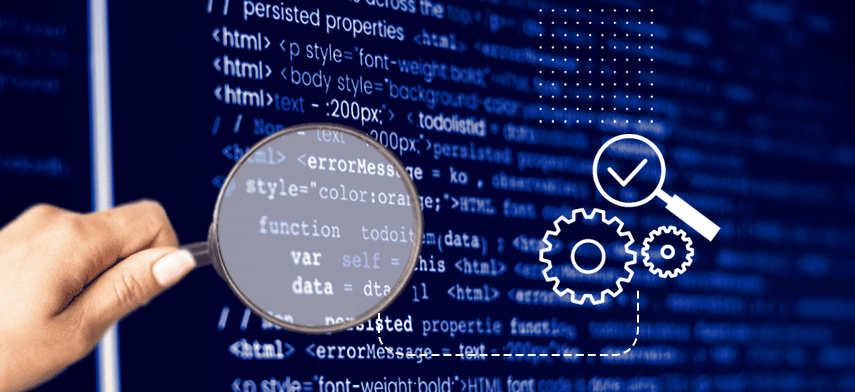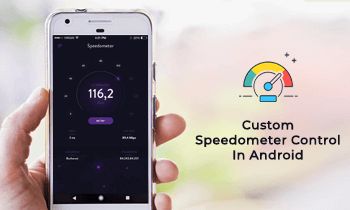2022 has seen business owners leveraging custom software development for customization, modernization, and management of their applications. From field service equipment maintenance coding to a full-fledged digital banking application, custom enterprise software has been providing enough viability to meet evolving user and ever-changing market demands.

Independent research says that global IT spending on enterprise software is anticipated to reach a whopping $755 billion by 2023. The reason behind this possible elevation is the quality of code that helps companies deploy, maintain, and modify commercial software at their convenience. And neglecting it would lead to potential losses and disturb user-company relationships in the longer run.
So, let us take a look at code quality in detail and understand its importance in today’s digital age.
All About Coding Quality
The approach to ensure the usefulness and maintainability of the code during software development is known as coding quality. It is a popular term among developers that effectively contributes to the UI/UX and is crucial on the business front. It mainly showcases the code quality techniques and practices that an individual or a team follows. While a good quality code can be customized to your users’ needs quite easily, a low-quality code can lead to frequent bugs and errors, degrading user satisfaction in the long run.
Efficient coding can provide necessary insights to project managers to generate profitable outcomes. However, it is important to note that code quality is not the same for everyone. For example, a web application developer might have a different understanding of it than a firmware developer. This is because both these software developers have different sets of goals for their code.
Here are some of the key characteristics that your code should be integrated with to gain the expected results.
1 Readability
The lines of code should be arranged in a way that a reviewer or another developer can understand them. This enables the success of the project in the long run. If a tester is called upon to have a look at the program, they should be able to easily understand what the lines of code are trying to convey without exerting themselves.
2 Portability
Since people access the internet from several devices, it is essential that your code is portable. In other words, it should be able to run on different kinds of devices. This helps your brand attain more visibility and mobility over the internet as it can appeal to a wide-ranging audience.
3 Robustness
Robustness is the ability to deal with errors in a code even when it is being run in unusual conditions. It should run irrespective of any external conditions and provide the desired output. Such code can be easily modified as it doesn’t depend on external factors. This can be achieved by testing the code under normal and unexpected situations.
4 Efficiency
Booting time is one of the main benefits of high quality code and can help you create a better impression on users. This means that the code should be efficient enough to load quickly. It should be reliable and capable of delivering the desired results consistently without the need for a lot of maintenance.
Why Maintaining Code Quality is Important
To get all the above characteristics on track, it is imperative to understand the importance of code. Writing well-structured code is a vital investment to ensure the usefulness and efficacy of your software project. What makes it more significant is its ability to offer a hassle-free environment to the developers, users, and organizations as a whole.
However, if your team fails to heed the quality of the code, it can pull in additional rework and ultimately increase the software development costs. As such, maintaining coding quality is the need of the hour and measuring its effectiveness regularly is significant to avoid any kind of technical debt. This is only possible when you target the right metrics to measure the efficiency of your code, as given below.
What are SOLID Principles in Programming?
SOLID principles are nothing but a set of rules and best practices introduced by the famous Computer Scientist Robert J. Martin (also known as Uncle Bob) that you need to follow while approaching Object-Oriented class design. These rules help your programmers understand the need for precise design patterns and software architecture as a whole.
With the help of these principles, you can easily overcome all the issues related to poor architecture.
Vulnerability – A specific change can break unanticipated parts. Without good test coverage, detecting would be difficult.
Fixity – A component cannot be easily brought into practice for another project or several places of the same project. It carries multiple combined dependencies.
Rigidity – Consistent effort is needed to satisfy change detection as it impacts various parts of the project.
To give you a more clear idea, let us discuss them one by one. Following the SOLID acronym, the principles are:
- Single Responsibility Principle
- Open-Closed Principle
- Liskov Substitution Principle
- Interface Segregation Principle
- Dependency Inversion Principle
1 Single Responsibility Principle (SRP)
The principle states that a class should carry ‘single responsibility’ when it comes to ‘change’. To put it simply, individual potential changes such as logging, database logic, etc., in the software’s identification should be able to determine the specification of the class. This means that if a class is a data container, like a Book/Student class, and it has some fields concerning that entity, it should change only when you change the data model.
2 Open-Closed Principle (OCP)
The principle states that classes should be closed to alterations (changing the code of an existing class) and open for extension (adding new functionality). It implies that you should be able to add unique functionality to the class without disturbing the existing code because modifications in the existing code can create potential errors and security risks.
3 Liskov Substitution Principle (LSP)
The principle states that the subclasses should be capable of substitution for their base classes. If class B is the subclass of class A, then you should be able to roll out an object of class B to any method that anticipates an object of class A without resulting in an unexpected output. Because when you use inheritance, it’s considered that the child class receives everything that the parent class has. The child class observes behavior expansion but never contracts. Hence, when a class doesn’t follow this principle, it may result in hard-to-detect bugs.
4 Interface Segregation Principle (ISP)
This principle states that multiple customer-centric interfaces are much more acceptable than a single generic interface. Concretely, it focuses on the separation of interfaces. This actually means that large interfaces should break down into smaller chunks. With this, you can ensure that implementing classes should be concerned only about their methods of interest.
5 Dependency Inversion Principle (DIP)
The principle states that instead of relying on concrete classes, you need to focus on abstractions. This means that both high-level and low-level modules should rely on abstractions. However, you need to ensure that these abstractions outline details and vice versa. Because abstractions show fewer fluctuations, you can easily change behaviors and track code advancements. It also gives enough room for decoupling.
How to Measure Code Quality
Code quality can be achieved by understanding the coding standards in software engineering and addressing the right set of metrics. Let’s check out what these metrics bring to the table.
Qualitative Metrics
1 Extensibility
Extensibility stands amongst the first qualitative code quality metrics that you need to keep in mind while developing a code. This can be achieved through concepts like the separation of concerns and loose coupling. By measuring extensibility, you can make the code much more functional without compromising on the entire system. Design principles like SOLID can also be used to improve the extensibility of a block of code.
2 Maintainability
The ability to easily modify or extend code is key to determining how useful it would be for your company. A change request can be processed much quicker, and a specific section of the code can be accessed much more easily when it comes to identifying a certain part of the code. The quality of the code is easy to deploy and monitor for problems. Using automated code to build the product is one way to achieve this. Moreover, you should consider using automated testing to validate the changes that are being processed in the code.
3 Readability and Code Formatting
Using naming schemes like camelCase, PascalCase, and snake_case can make the code much more readable and consistent. Proper indentation also makes up a significant part of the readability and formatting of the code. Apart from all this, you can also use nesting to boost the code quality.
4 Testability
Testing pays very close attention to the code and its inner workings. Testability can be measured through several test instances of the software product that can be used to determine its quality and the faults that it might possess. A commonly used principle that you can implement to boost testability is extracting non-testable code into wrapper classes.
Quantitative Metrics
1 Halstead Complexity Measures
The Halstead complexity measures can be used to confirm volume, difficulty, calculated program length, and program vocabulary of the code. The more complex the code is, the lower it is in quality and the harder it is to maintain. These metrics evaluate the code on the basis of several parameters such as the number of operators, operands, testing time, and size.
2 Cyclomatic Complexity
Cyclomatic complexity is used to measure the number of linearly independent paths that go through the program’s source code. The cyclomatic complexity of a program uses the decision-making parts such as the if-else, do-while, and switch case operators. It can be measured with the help of a control-flow graph.
3 Weighted Micro Function Points
It is one of the key code quality standards and is a modern software sizing algorithm. Most of the estimation is built on the automatic measurements of the existing code. Here, the measured elements include Flow complexity (FC), Inline data (ID), Data Transfer, Object vocabulary (OV), Object Conjuration (OC), etc.

How to Improve Code Quality
Now that you know how to measure the quality of the code in practice, you can move forward to consider some ways that can help you improve the overall coding quality of your software project. The ways are not limited to but include the following:
1 Prioritize Comments
It is important to note that you should not comment on every major and minor aspect of the code. Write 2-3 lines at the top of the code, and add comments when dealing with functions, classes, and possibly complicated lines. This helps you convey a much clearer software development code with a better presentation entirely.
2 Naming Convention
Having a proper naming convention in all your coding ensures that everybody can understand the different aspects of the program. Taking care of different parts such as file structure and variable names can make understanding the entire program much easier for all the related stakeholders of your project.
3 Test Coverage
It is not possible to cover all the cases of errors and bugs in the code with proper code testing. Because the software and the different conditions it operates in change from time to time. As such, focusing on the units of the code that need to be properly tested is the way to go. This would not only improve code quality but also identify potential errors beforehand.
7 Best Practices to Implement Coding Standards in Your Software Development
Along with the above-mentioned ways, you also need to consider a certain set of practices that you can implement to improve the quality and flexibility of the code that you’re producing. Here’s a compilation of some of the coding standards best practices to give you a better idea.
1 Prioritize Architecture
While most developers end up underestimating code architecture when they are met with strict deadlines, it is important to not ignore the structure of the code. Having a clear vision of the code and how it is laid out should be the foundation of your coding process. This will help you maintain good code quality by all means.
2 Code Review
Measuring code quality should be the primary objective of the review process instead of teaching your team to work on different sections. The code should be measured and reviewed in the early stages and in small groups so that all the parts are taken care of. You can use popular code review tools like Git, GitHub, GitLab, and Bitbucket for the same.
3 Stick to One Specific Coding Style
Following a set pattern of naming the different parts of the code is fundamental to coming up with a block of code, which significantly varies for different situations. Still, a natural agreement should be found between other developers so that the project does not suffer due to a change of hands.
4 Rules Should Have Intentions
For every rule that you’re stating in the code, there should be clear reasoning as to why the code is expected to follow a certain rule. You can elaborate on this in the comments of the code. This should also include compliant and non-compliant examples and exceptions to observe a smooth software development environment.
5 Document Your Code
Documenting is one of the good code practices that can ensure complete coding efficiency across the entire software development process. You need to actively encourage developers to record every detail so as to avoid past mistakes and gather all the necessary information for future reference.
6 Focus on High Cohesion and Loose Coupling
With high cohesion, it becomes easier to achieve the don’t repeat yourself (DRF) code and reduce the level of module data duplication. Loose coupling, on the other hand, allows making changes to the required modules without affecting other modules. This ultimately helps to write, test, deploy, and maintain the code quality of your software.
7 Use Code Linter
Using an analysis tool known as Lint stands among the code best practices that can help you identify stylistic errors, bugs, and unreliable constructs with ease. You can explore commonly used Linters like ESLint, Sublime Linter, JSLint, etc., to successfully discover and remove errors like code smells in your source code.
Conclusion
Maintaining good code quality is as important as writing the code. You can improve the quality of code at any time and enjoy the benefits of coding standards at any development stage. Just make sure you partner with the right custom software development company to reach your desired business goals. You can also hire dedicated software developers from Mobisoft who can successfully ensure top-quality code and help you build future-ready products, applications, and digital solutions.

Author's Bio:

Pritam Barhate, with an experience of 14+ years in technology, heads Technology Innovation at Mobisoft Infotech. He has a rich experience in design and development. He has been a consultant for a variety of industries and startups. At Mobisoft Infotech, he primarily focuses on technology resources and develops the most advanced solutions.


